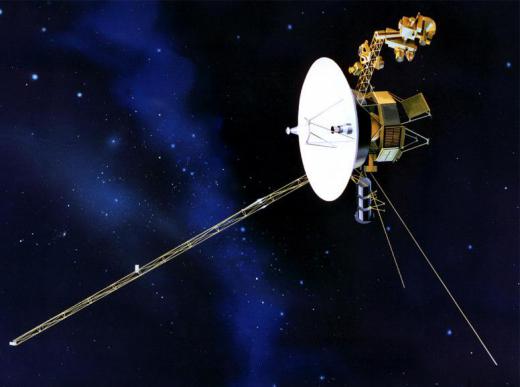What is a Radioisotope Thermoelectric Generator?
 Michael Anissimov
Michael Anissimov
A radioisotope thermoelectric generator (RTG) is an electric power source which uses the heat produced by radioactive decay. Radioisotope thermal generators are not nuclear reactors and do not use nuclear fission or fusion for energy, although they are still highly radioactive. Radioisotope thermal generators are used when other power sources are too expensive or impractical, such as on spacecraft and automated beacons and radar systems.
A radioisotope thermal generator contains a quantity, often several pounds (kilograms) or more, of highly radioactive material. The radioactive material must produce enough heat to provide significant amounts of electricity; at the same time, it must not decay so quickly that the radioisotope thermal generator is useless after a few years. Plutonium-238 is the most common isotope used for radioisotope thermal generators, although strontium-90 and others have been utilized in the past. Plutonium-238 is expensive to produce, but it gives off low-penetration alpha radiation, which is much easier to shield against than the radiation produced by other isotopes.

To convert the heat into electricity, radioisotope thermal generators use thermocouples, semiconductor devices which can convert differences in temperature directly into electricity. Although thermocouples are durable and have no moving parts, they are very inefficient, turning less than 10% of the available heat into electric power. Thermocouples gradually degrade over time, adding to the losses caused by the slow decay of the radioactive material.

Radioisotope thermal generators are very expensive compared to other power sources, but they are useful in isolated systems without other supplies of power, such as interplanetary spacecraft and unmanned radio beacons. A radioisotope thermal generator can produce electric power for decades, without any external input or outside maintenance, until the radioactive material decays or the electronics fail. The use of radioisotope thermal generators on board spacecraft such as Cassini has caused many environmental groups to protest the use of radioactive material in space; if the rocket launching Cassini had failed, there was a small chance that the plutonium could have been released into the atmosphere.
AS FEATURED ON:
AS FEATURED ON:













Discuss this Article
Post your comments